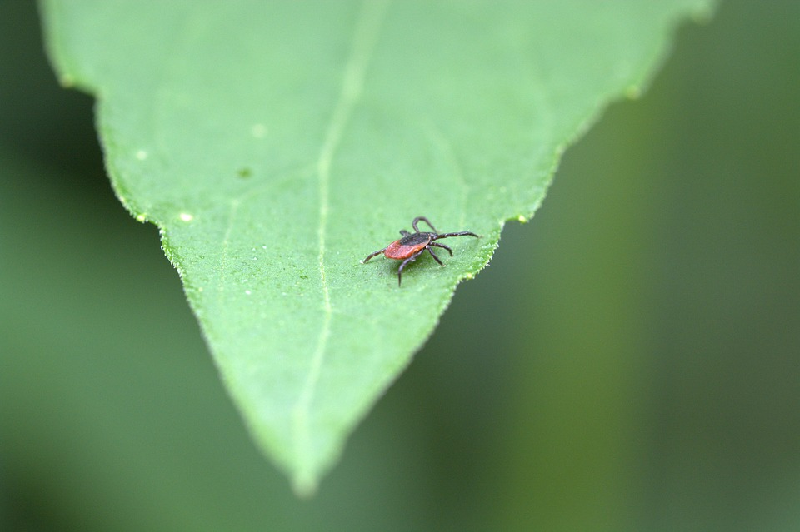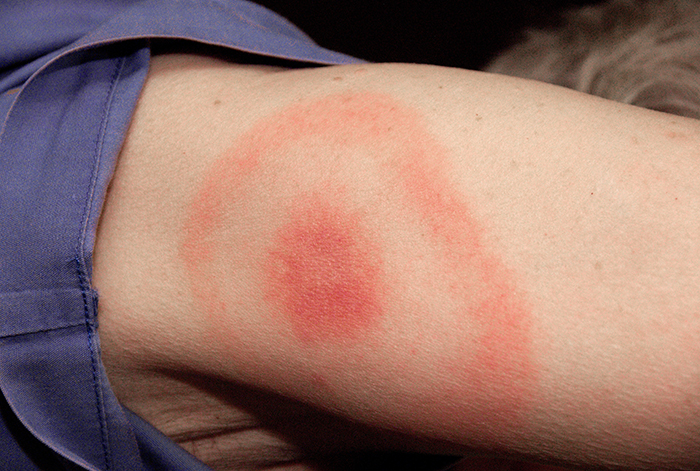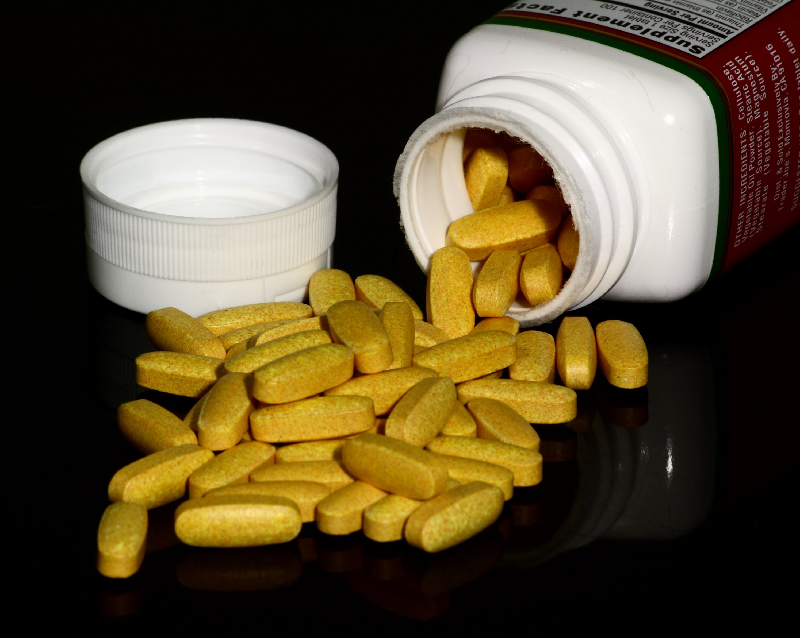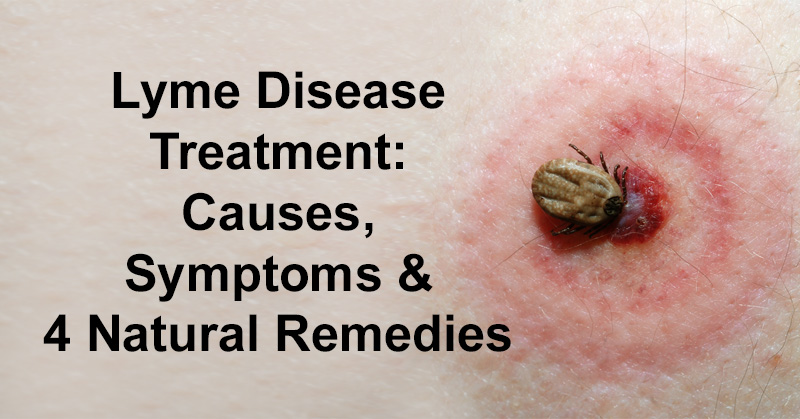Lyme disease is transmitted by the bite of a black-legged tick or deer tick. (1) Depending on how much time has passed since the bite from an infected tick, Lyme disease symptoms will vary. For example, within a few days, you may see Lyme disease symptoms similar to that of the flu. However, there are steps to take to help banish Lyme disease symptoms.
First off, conventional Lyme disease treatment methods involve antibiotics. If the central nervous system is affected, your doctor may an intravenous antibiotic as a Lyme disease treatment method. (2)
Furthermore, a Lyme disease treatment plan, such as improved diet, can help give your body the immune boost it needs. Other natural Lyme disease treatment methods involve giving your body the rest it needs. To learn more about Lyme disease treatment plans, read below.

Lyme Disease Causes
Lyme disease is caused by Borrelia burgdorferi and Borrelia mayonii bacteria, which are found in deer ticks. The ticks are small enough they are nearly impossible to spot, especially when they are young.
The tick must be infected when it bites you for you to contract Lyme disease. And most of the time, it must be attached for 36 to 48 hours in order for you to contract the disease. If you find an attached tick, check to see if it’s swollen. If so, it may have fed long enough to transmit bacteria. If you remove the tick as soon as possible, it may prevent infection. (3)
Lyme disease causes a variety of early signs and symptoms. (4)
These will take place 3 to 30 days after tick bite:
- Fever, chills, headache, fatigue, muscle and joint aches, and swollen lymph nodes
- Erythema migrans (EM) rash
- Rash begins at the site of a tick bite after a delay of 3 to 30 days (average is about 7 days)
- Additionally, rash expands gradually over a period of days reaching up to 12 inches or more (30 cm) across
- Rash may feel warm to the touch but is rarely itchy or painful
- Sometimes the rash clears as it enlarges, which results in a target or “bull’s-eye” appearance
- The rash may appear on any area of the body

Later signs and symptoms, which could happen days to months after a deer tick bite, could include the following symptoms:
- Severe headaches and neck stiffness
- Additional EM rashes on other areas of the body
- Arthritis with severe joint pain and swelling, particularly the knees and other large joints.
- Facial palsy (this is a loss of muscle tone or droop on one or both sides of the face)
- Intermittent pain in tendons, muscles, joints, and bones
- Heart palpitations or an irregular heart beat
- Dizziness or shortness of breath
- Inflammation of the brain and spinal cord
- Nerve pain
- Shooting pains, numbness, or tingling in the hands or feet
- Problems with short-term memory
The best way to prevent Lyme disease is to avoid areas where deer ticks live, especially wooded, bushy areas with long grass.
You can decrease your risk of getting Lyme disease with these preventative measures: (5)
- Cover up: When you’re in wooded or grassy areas, wear shoes. Also wear long pants, and tuck them into your socks. Be sure to cover your arms, too, with a long-sleeved shirt. For good measure, also wear a hat and gloves. Try to stick to trails and avoid walking through low bushes and long grass. Keep your dog on a leash.
- Use natural insect repellents. Be careful spraying around children’s eyes and mouths.
- Tick-proof your yard: Clear brush and leaves where ticks live. Keep woodpiles in sunny areas.
- Check you and your children after spending time outdoors: Check pets, as well! Be thorough—deer ticks are often no bigger than the head of a pin. Since ticks often remain on your skin for hours before attaching, be sure to shower after you come inside. Use a washcloth to knock off any unattached ticks.
- Don’t assume you’re immune: Remember, you can get Lyme disease more than once.
- Remove a tick as soon as possible: You can do this with tweezers. In a gentle manner, grasp the tick near its head or mouth. Do not squeeze or crush the tick. Instead, pull carefully and steadily. After you’ve removed the entire tick, dispose of it. Then, administer antiseptic to the bite area.
Here are 4 natural treatments for Lyme disease:
1. Improve Immune Function With The Right Foods

Boosting your immune system with the right foods can help you overcome chronic Lyme disease. Foods are the best Lyme disease treatment you can try. Some of the best foods for boosting immunity include:
- High-antioxidant foods: Eat plenty of fresh fruits and vegetables. This especially includes leafy greens and other brightly colored veggies or berries. These help control free radical damage and inflammation, lower risk for nutrient deficiencies, and can protect you from complications that may arise from Lyme disease.
- Probiotic-rich foods: Research published in the Journal of Applied Microbiology shows that probiotics can help reduce progression and symptoms of infectious diseases. (6) Probiotic foods include kefir, as well as fermented vegetables like sauerkraut, kimchi and kvass. You should consume these items on a regular basis. They can help grow good bacteria in your gut.
2. Supplements to Help Improve Cellular Function

After you’ve modified your diet, the next step in fighting Lyme disease is to improve your cellular function and protection. The Lyme disease bacteria can attack healthy cells. As such, consider adding the following supplements to your daily routine:
- Vitamin D: Vitamin D3 naturally boosts immunity and plays a role in regulating inflammation. Take about 5,000 IU daily, especially if you’re vitamin D deficient. If you live in an area that doesn’t get a lot of sun, chances are, you are deficient in vitamin D.
- CoQ10: CoQ10 can help protect your brain and nervous system from degradation. It also fights against inflammation. Furthermore, it can also lower symptoms like joint pain and aches. As such, it’s often used by patients with ongoing fatigue and autoimmune disorder symptoms, such as fibromyalgia. (7) Take 200 milligrams twice daily.
- Medicinal mushrooms: Studies show that medicinal mushrooms, such as cordyceps, maitake, and reishi mushrooms, promote an adaptive immune system. This in turn helps control autoimmune reactions. (8) You can find these mushrooms in supplement forms.
- B-Complex: B vitamins promote metabolic and cellular functions. Furthermore, they help fight infections as well as improve neurological health. This is especially important for those who suffer from Lyme disease, as well as those who deal with the effects of stress or fatigue in general.
- Magnesium: Magnesium can help support nerve signaling, as well as reduce muscle aches. Did you know that many people are deficient in magnesium? And since stress creates a need for more of it, those with Lyme disease should ensure they are getting plenty of magnesium.
- Turmeric: Turmeric by nature is anti-inflammatory. It can help reduce joint pain, treat headaches, and help repair damage to blood vessels or nerves.
- Probiotics: On top of eating probiotic foods, take a probiotic supplement to help destroy Lyme.
3. Get Plenty of Rest & Manage Stress
Stress can weaken the immune system. As such, find ways to manage your stress in order to help fight against Lyme disease.
For example, be sure to:
- Schedule fun activities
- Get plenty of rest
- Meditate, join a support group, journal, or exercise
- Use essential oils
- Address past pain and try to forgive those who have wronged you
- Try adaptogenic herbs, such as ashwagandha. It can help reduce the effects of stress, as well as balance cortisol levels.
4. Reduce Mold & Parasite Exposure

According to Lyme disease experts, environmental triggers are thought to play a major role in the development of autoimmune diseases. Parasites and exposure to mold can contribute to chronic symptoms of Lyme disease, as they can stress the immune system. (9) These foods are a great Lyme disease treatment you should try.
Try the following to treat parasitic infections and toxicity:
- Activated charcoal: This helps the body expel harmful substances
- Bentonite clay: This can help rid of chemicals and heavy metals. Be sure to take it on an empty stomach.
- Herbs: This includes wormwood, black walnut, oregano, garlic, Japanese knotwood, and grapefruit seed extract.


